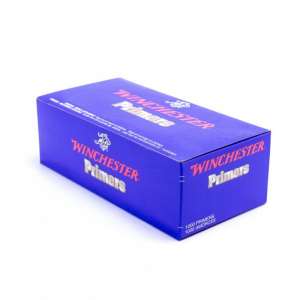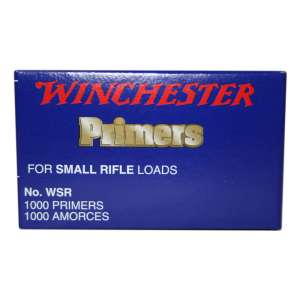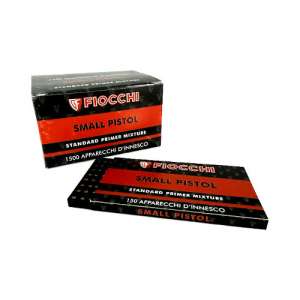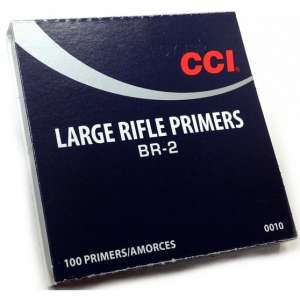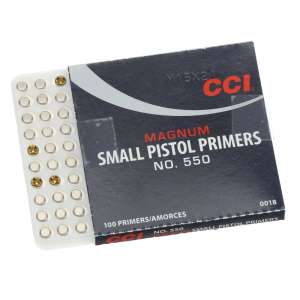Primers
Reloading Primers Guide: Tips & Best Practices
Reloading primers are a critical component in the ammunition manufacturing process. They have the important job of converting mechanical energy into a small conflagration that ignites the powder charge in the cartridge. Choosing the right primer is crucial to ensure proper ignition and consistent performance. In this guide, we will explore different types of primers, primer sizes, and provide useful tips for selecting and using primers in reloading.
Key Takeaways:
- Reloading primers play a vital role in the ammunition manufacturing process.
- Choosing the right primer is essential for proper ignition and consistent performance.
- There are different types of primers, such as Boxer and Berdan, each with its own characteristics.
- Primer sizes, including small pistol, large pistol, small rifle, and large rifle, should be selected according to the specific cartridge.
- Magnum primers can be used in loads with challenging ignition requirements, but caution must be exercised.
The Importance of Primers in Ammunition
Primers are a critical component in the ammunition manufacturing process, playing a vital role in achieving optimal performance and accuracy. They are responsible for initiating the ignition of the propellant charge, ultimately propelling the projectile out of the firearm.
During ammunition manufacturing, the primer’s function is to create a small conflagration, converting mechanical energy into the ignition needed to ignite the powder charge. This ignition process is essential, as it initiates the controlled explosion that drives the bullet forward.
Any variance in the performance of the primer can have a significant impact on the ignition process, which in turn affects the overall performance and accuracy of the ammunition. Inconsistent ignition can lead to variations in muzzle velocity, potentially resulting in inconsistent bullet trajectories and reduced accuracy.
Furthermore, the primer’s ability to consistently ignite the powder charge is crucial for maintaining reliable performance across multiple rounds. Inconsistent primer performance can lead to shot-to-shot variations in pressure levels and velocities, affecting the overall consistency and reliability of the ammunition.
The importance of reliable primer ignition extends to various shooting disciplines, including competitive shooting, self-defense, and hunting. Whether it’s achieving tight shot groups on the competition range or ensuring effective terminal performance on target, reliable primer performance contributes significantly to the overall success of each shot.
To ensure the consistent performance and accuracy of your ammunition, it is essential to select high-quality primers and handle them properly during the reloading process. By paying attention to primer selection, storage, and handling, you can minimize the risk of variations in primer performance and maximize the reliability and consistency of your handloaded ammunition.
Next, let’s explore the different types of primers available and how they can further impact the performance of your ammunition.
Types of Primers
When it comes to reloading ammunition, understanding the different types of primers available is essential. The two main types of modern centerfire primers are Boxer and Berdan.
Boxer Primers
Boxer primers are commonly used in ammunition manufactured in the United States. These primers feature a small amount of primary explosive material inside the base. The design of Boxer primers allows for easy removal and replacement, making them popular among reloaders. They are available in various sizes to suit different caliber cartridges.
Berdan Primers
Berdan primers differ from Boxer primers in their design. Instead of having a separate priming compound in the primer cup, Berdan primers rely on an anvil built into the primer cup area of the cartridge case itself. This design makes Berdan primers more challenging to remove and replace, and they are typically used in European-made ammunition.
Understanding the differences between Boxer and Berdan primers is crucial in selecting the right type for your reloading needs. The availability of primer sizes for each type ensures compatibility with various cartridges, allowing for safe and efficient reloading.
Primer Sizes
When it comes to reloading ammunition, using the correct primer size is crucial for consistent and reliable performance. There are four main sizes of primers for common centerfire cartridges:
- Small Pistol
- Large Pistol
- Small Rifle
- Large Rifle
Although small rifle and small pistol primers may appear identical on the outside, it is important not to use them interchangeably. While there are slight size variations between large rifle and large pistol primers, they should also not be substituted for one another.
Using the correct primer size ensures proper ignition and helps maintain the desired pressure levels within the cartridge. It is always recommended to consult reloading manuals and load data specific to the cartridge you are reloading to ensure the accurate selection of primer sizes.
Magnum Primers
Magnum primers are designed to provide increased ignition for specific types of ammunition loads. These primers are particularly useful when dealing with powder charges and pressure levels that may be difficult for standard primers to consistently ignite.
When reloading ammunition, it is crucial to ensure that the primer selected is suitable for the specific load. Using magnum primers when appropriate can help ensure reliable ignition for loads with larger powder charges or when using slow-burning powders that require a higher level of energy to ignite.
It is important to note that magnum primers should not be interchanged with standard primers unless specified in published load recipes. Using the wrong type of primer can have adverse effects on the performance and safety of the ammunition.
Benefits of Magnum Primers
Magnum primers offer several benefits when used correctly:
- Increased ignition power: Magnum primers deliver a hotter and more energetic ignition, which is crucial for consistent and complete combustion of the powder charge.
- Improved reliability: The higher energy output of magnum primers helps ensure reliable ignition, reducing the risk of misfires or incomplete ignition.
- Consistent performance: Magnum primers can provide more consistent results in loads that demand increased pressure levels or require longer ignition times.
Considerations When Using Magnum Primers
While magnum primers offer benefits for specific ammunition loads, it is important to consider the following:
- Load data: Always follow published load recipes that specify the use of magnum primers. These recipes are specifically designed to account for the increased ignition power offered by magnum primers.
- Pressure levels: The use of magnum primers can potentially increase the pressure levels within the cartridge. It is crucial to monitor and test the ammunition carefully to ensure it remains within safe pressure limits.
- Powder charge adjustment: When using magnum primers, it may be necessary to adjust the powder charge slightly to maintain the desired performance. Always consult reliable load data and conduct thorough testing when making any adjustments.
| Property | Standard Primers | Magnum Primers |
|---|---|---|
| Ignition Power | Standard | Increased |
| Suitable Loads | Standard to moderate powder charges | Large powder charges, slow-burning powders |
| Performance | Consistent for standard loads | Ensures consistent ignition for challenging loads |
| Pressure Levels | Normal | Potentially higher, requires careful monitoring |
| Load Data Adjustment | N/A | May require slight adjustment |
Benchrest Primers
In precision shooting applications, achieving consistent primer performance is crucial for accuracy and reliability. That’s where benchrest primers come into play. These specialized primers are meticulously manufactured to ensure optimal ignition performance, bringing forth the utmost consistency and accuracy in each shot.
Variations in primer ignition performance can have a significant impact on crucial factors such as bullet velocity consistency and pressure variance. Benchrest primers are engineered to minimize these variations, resulting in tighter shot groups and improved overall performance.
Benchrest primers are the go-to choice for shooters who demand precision in every aspect of their loads. Whether it’s long-range precision shooting or competitive benchrest competitions, these primers deliver the reliability and consistency necessary to achieve exceptional results.
Primer Selection Tips
When it comes to selecting the right primers for your reloading needs, there are a few key tips to keep in mind. Considering factors such as brand variation and performance in different reloading equipment can help you make an informed choice. Additionally, experimenting with different primer brands can be beneficial in troubleshooting any feeding or ignition problems you may encounter during the reloading process. Proper handling of primers is also essential to ensure optimal performance. Avoid contact with oils and dirt that can interfere with ignition, as even the smallest contamination can have a significant impact.
One effective way to compare and evaluate the performance of different primer brands is to conduct tests using standardized loads. By using the same powders and bullets, you can analyze the consistency and accuracy of each primer brand and identify any variations. Additionally, seeking recommendations from experienced reloaders or consulting reputable reloading manuals can provide valuable insights into primer selection.
To sum up, here are some primer selection tips:
- Consider brand variation and performance in different reloading equipment.
- Experiment with different primer brands to troubleshoot issues and improve performance.
- Handle primers carefully to avoid contamination.
By following these primer selection tips, you can enhance your reloading experience and achieve optimal performance in your ammunition.
Example Comparison Table:
| Brand | Performance | Feeding | Ignition |
|---|---|---|---|
| Federal | Consistent | Smooth | Reliable |
| CCI | Highly Accurate | Reliable | Instant |
| Winchester | Reliable | Smooth | Consistent |
| Remington | Versatile | Dependable | Fast |
Case Preparation and Primers
Proper case preparation is essential for optimal primer performance. To ensure a clean and consistent seating surface for the primer, it is crucial to clean the primer pocket. This can be achieved using a reaming tool or primer pocket cleaner, which effectively removes any residue and provides a uniform depth for primer seating.
Consistent primer seating is vital for reliable ignition and consistent performance. By carefully preparing the case and ensuring a snug fit for the primer, you can enhance the overall performance of your ammunition.
| Case Preparation Steps | Tools Needed |
|---|---|
| Clean the primer pocket | Reaming tool or primer pocket cleaner |
| Inspect the case for any defects | Case inspection gauge or magnifying glass |
| Remove any burrs or imperfections | Deburring tool or chamfering tool |
| Trim the case to the proper length | Case trimmer or case length gauge |
Following these case preparation steps and using the appropriate tools will ensure that your primer seating is consistent and reliable. Remember to always practice proper safety measures when handling ammunition components.
Introduction to Reloading Components
When it comes to reloading ammunition, understanding the different components involved is essential for achieving consistent and accurate results. Reloading components serve as the building blocks of the ammunition manufacturing process, and each plays a crucial role in the overall performance of the reloaded rounds.
The key reloading components include:
- Cases: The cartridge case serves as the container for the propellant, primer, and bullet. It also provides structural integrity to the round. Cases can be reused multiple times, making them a cost-effective choice for reloaders.
- Primers: Reloading primers are small metal cups filled with priming compound. They are responsible for initiating the ignition of the propellant when struck by the firing pin. Proper primer selection is vital for achieving consistent ignition and reliable performance.
- Powders: Reloading powders are the propellant used to propel the bullet out of the barrel. Different powders have varying burn rates, and the correct powder selection is critical for achieving optimal velocity, accuracy, and pressure levels.
- Bullets: The bullet is the projectile that is fired from the firearm’s barrel. Bullet selection is important for achieving accuracy and desired terminal ballistics in different shooting applications.
Each reloading component must be carefully selected based on specific load data and compatibility with the firearm. It is essential to keep in mind that different firearms may have specific requirements, so researching and following the manufacturer’s recommendations is crucial.
Reloading Component Comparison
| Component | Description | Reuseability |
|---|---|---|
| Cases | Contain propellant, primer, and bullet | Can be reused multiple times |
| Primers | Initiate ignition of the propellant | Single use |
| Powders | Propellant used to propel the bullet | Single use |
| Bullets | The projectile fired from the firearm | Single use |
By understanding the role of each reloading component, reloaders can make informed decisions in selecting the right components for their reloading needs. This ensures the production of consistent and accurate ammunition that meets their desired performance requirements.
Understanding Case Selection and Preparation
When it comes to reloading, cases are a crucial aspect that requires careful consideration. Proper case selection and preparation are essential for achieving optimal results in terms of reusability, quality, and overall performance. In this section, we will explore the importance of case selection, the necessary steps for case preparation, and key factors to keep in mind.
Case Selection
Choosing high-quality cases is the first step in ensuring successful reloading. It’s important to select cases that are specifically designed for reloading purposes. Look for reputable brands that are known for their consistency and durability. Quality cases not only enhance reusability but also contribute to consistent and reliable performance.
To aid in case selection, refer to reloading manuals and consult experienced reloaders who can provide valuable insights based on their own experiences. Understanding the specific needs and requirements of your reloading setup is crucial for selecting the right cases.
Case Preparation
Proper case preparation is vital for maximizing the lifespan of your cases and ensuring their suitability for reloading. Before reloading, each case should undergo a thorough cleaning process to remove any dirt, debris, or residue that may hinder performance. This can be done using specialized case cleaning tools or techniques, depending on personal preference.
Visual inspection is another critical aspect of case preparation. Carefully examine each case for signs of damage, such as cracks or splits, as these can compromise safety and reliability. Additionally, check the primer pockets and flash holes to ensure they are clean and free from obstructions.
Case Reusability
One of the significant advantages of reloading is the ability to reuse cases multiple times. However, to ensure optimal reusability, it is important to handle cases with care throughout the reloading process. Avoid excessive resizing or overworking the brass, as this can lead to premature failure or reduced performance.
It’s crucial to monitor case dimensions and trim cases as needed to maintain proper length. This ensures consistent chambering and reliable ignition. Regularly inspect cases for signs of wear and stress, such as neck splits or primer pocket loosening. Applying appropriate annealing techniques can also help to prolong case life and maintain consistent performance.
Benefits of Proper Case Selection and Preparation
| Benefits | Description |
|---|---|
| Enhanced Reusability | Proper case preparation increases the lifespan of cases, allowing for multiple reloads and cost savings. |
| Consistent Performance | High-quality cases and thorough preparation contribute to more predictable and reliable ammunition performance. |
| Improved Safety | Visual inspection and regular maintenance of cases help ensure safe reloading practices and reduce the risk of malfunctions. |
| Optimal Chamber Fit | Case trimming and dimension monitoring ensure proper chambering and prevent potential feeding or extraction issues. |
In conclusion, understanding case selection and preparation is crucial for maximizing the reusability, quality, and performance of your reloaded ammunition. By carefully selecting high-quality cases, performing thorough case preparation, and adhering to proper handling techniques, you can ensure consistent results and achieve optimal reloading success.
Primers: Types, Sizes, and Considerations
When it comes to reloading ammunition, primers are a crucial component that can greatly impact the performance and accuracy of your loads. Understanding the different types and sizes of primers, as well as considering other important factors, is essential for successful reloading.
Types of Primers
There are two main types of primers used in ammunition reloading: Boxer and Berdan primers. Boxer primers, commonly used in the United States, contain a small amount of primary explosive material inside the base. On the other hand, Berdan primers rely on an anvil built into the primer cup area of the cartridge case itself. Both types serve the purpose of initiating the ignition of the powder charge, but they have slight differences in design and functionality.
Primer Sizes
Primer sizes vary depending on the specific cartridge and firearm you are reloading for. Common primer sizes include small pistol, large pistol, small rifle, and large rifle. It’s important to use the correct primer size for your specific reloading needs to ensure proper ignition and consistent performance.
Considerations in Primer Selection
When selecting primers for reloading, there are a few considerations to keep in mind. Magnum primers, for example, are designed to provide increased ignition with certain types of powder charges that may be more challenging to ignite. Benchrest primers, on the other hand, are specifically designed for precision shooting applications, offering improved primer ignition performance and consistency.
Additionally, primer brand variation can influence reloading performance and troubleshooting. It’s worth experimenting with different primer brands to find the one that works best with your particular reloading setup and achieves the desired results. Handling primers properly, keeping them free from oil and dirt, is also crucial for optimal performance.
| Type of Primer | Key Characteristics |
|---|---|
| Boxer Primers | – Contain primary explosive material – Widely used in the United States – Easy to reload with |
| Berdan Primers | – Rely on anvil built into primer cup – Commonly used in Europe and some military ammunition – May be more challenging to reload |
| Small Pistol Primers | – Used for small caliber pistols – Smaller in size than rifle primers |
| Large Pistol Primers | – Used for large caliber pistols – Larger in size than small pistol primers |
| Small Rifle Primers | – Used for small caliber rifles – Similar in size to small pistol primers |
| Large Rifle Primers | – Used for large caliber rifles – Larger in size than small rifle primers |
Understanding the different types, sizes, and considerations of primers will help you make informed decisions when reloading ammunition. By selecting the right primer for your specific needs and following proper reloading practices, you can ensure reliable ignition and achieve accurate and consistent loads.
Powder Selection and Reloading Data
Powder selection is a vital part of the reloading process. The type of powder used can greatly affect the performance of your ammunition. Different powders have varying burn rates and characteristics, which can impact bullet velocity, pressure levels, and overall accuracy. To ensure safe and reliable reloading, it is crucial to follow the reloading data provided by powder manufacturers.
Reloading data includes specific load information such as the recommended powder charge, cartridge overall length, and velocity data. This data is typically provided by reputable powder manufacturers and is based on extensive testing and research. By following the recommended load data, handloaders can achieve optimal performance while minimizing the risk of overpressure or other safety concerns.
Reloading data can be found in reloading manuals, which are comprehensive guides that provide detailed instructions for reloading various calibers. These manuals typically include load data for different bullet weights, primer types, and powder manufacturers. It is important to consult the specific manual for the caliber you are reloading to ensure accurate information.
It is worth noting that reloading data is specific to the combination of components used, including bullet type, primer type, and cartridge case. Deviating from the recommended load data by substituting components or exceeding the recommended powder charge can result in unsafe conditions and potentially catastrophic firearm failures.
In addition to relying on reloading data, it is advisable to start with conservative loads and carefully monitor performance during initial testing. This allows handloaders to assess the behavior of their reloads and make any necessary adjustments to achieve optimal results.
Benefits of Following Reloading Data:
- Ensures safe and reliable reloading
- Helps achieve consistent and accurate loads
- Minimizes the risk of overpressure and other safety concerns
- Provides comprehensive information specific to bullet weight, primer type, and powder manufacturer
- Serves as a starting point for load development and customization
| Powder Selection Considerations | Reloading Data Sources |
|---|---|
| Consider the burn rate and characteristics of the powder | Reloading manuals from reputable sources |
| Match the powder to the desired performance characteristics | Manufacturer websites and technical data sheets |
| Consult load data specific to the bullet weight, primer type, and powder manufacturer | Online forums and communities dedicated to reloading |
| Start with conservative loads and carefully monitor performance during testing | Reloading equipment and component manufacturers’ publications |
Bullet Selection and Replicating Factory Loads
When it comes to reloading, bullet selection plays a crucial role in achieving the desired accuracy. The bullet you choose can significantly impact the performance of your reloads. To ensure consistency and accuracy, replicating factory loads can serve as an excellent starting point.
By using reloading data provided by bullet and powder manufacturers, you can match the exact bullet and powder combination used in the factory loads. This not only helps in achieving consistent performance but also provides a benchmark for accuracy. Utilizing reliable reloading data ensures that your reloads closely resemble the performance of factory ammunition.
However, replicating factory loads should only be considered as a starting point. To further optimize your loads, it’s essential to experiment with different bullet types and weights. This experimentation allows you to fine-tune your reloads according to your specific needs.
By exploring various bullet options, you can tailor your reloads for specific applications – whether for precision shooting, hunting, or target practice. Different bullets offer unique characteristics such as weight, shape, and construction, which can affect external ballistics and terminal performance.
For example, a match-grade bullet with a boat-tail design may deliver exceptional long-range accuracy, while a bonded bullet may provide reliable expansion and weight retention for hunting applications. It’s vital to consider the intended use and consult reliable sources, such as bullet manufacturers and reloading manuals, to select the most appropriate bullet for your reloading project.
Remember, bullet selection is just one piece of the puzzle. To achieve optimal performance and accuracy, it’s essential to consider other factors such as case preparation, primer selection, and powder charges. A holistic approach to reloading helps ensure that each component works harmoniously together, resulting in consistent and reliable reloads.
Conclusion
When it comes to reloading ammunition, the importance of primers cannot be overstated. They are the key to reliable ignition and consistent performance. By following best practices and considering important tips, you can take your ammunition crafting to the next level.
First and foremost, make sure to choose the right primer for your specific reloading needs. Understand the different types, such as Boxer and Berdan primers, and select the appropriate primer size for your cartridge. This attention to detail ensures proper ignition and reliable performance.
Additionally, proper case preparation plays a crucial role in primer performance. Take the time to clean the primer pocket and provide a uniform seating surface. This, along with consistent primer seating, guarantees reliable ignition and consistent results.
By considering primer selection tips, case preparation, and using appropriate reloading components, you can enhance your ammunition crafting experience and achieve optimal performance from your reloads. Take pride in your craftsmanship and enjoy the consistency and accuracy that comes from using the right primers in your reloading process.
FAQ
What is the importance of primers in ammunition?
Primers play a vital role in initiating the ignition of the propellant charge, which ultimately affects the performance and accuracy of the ammunition.
What are the different types of primers?
The two basic types of modern centerfire primers are Boxer and Berdan primers, each with its own ignition mechanism.
What are the different sizes of primers?
The common centerfire primer sizes include small pistol, large pistol, small rifle, and large rifle, with variations between them that must be considered for proper usage.
What are magnum primers used for?
Magnum primers are designed to ignite powder charges that are challenging for standard primers, ensuring consistent ignition in specific load combinations.
What are benchrest primers?
Benchrest primers are precision-designed primers that ensure consistent performance and help achieve the utmost accuracy in loads intended for precision shooting.
What should I consider when selecting primers?
It’s important to consider factors such as brand variation and performance in different reloading equipment. Experiments with different primer brands can troubleshoot feeding and ignition issues.
Why is proper case preparation important for primer performance?
Proper case preparation, including cleaning the primer pocket, ensures a clean and consistent seating surface for the primer to ensure reliable ignition and consistent performance.
What are the components of ammunition manufacturing?
Reloading components include cases, primers, powders, and bullets. Selecting the right components is crucial for achieving consistent and accurate loads.
Can cases be reused in reloading?
Yes, cases can be reused multiple times with proper preparation and handling. High-quality cases suitable for reloading should be visually inspected and thoroughly cleaned.
What are some key considerations when it comes to primers in reloading?
Understanding the different types, sizes, and considerations when selecting and using primers is crucial for achieving accurate and consistent loads in the reloading process.
How important is powder selection and reloading data?
Powder selection and following reloading data provided by powder manufacturers are vital for safe and reliable reloading. The data includes specific instructions for powder charge, overall length, and velocity data.
How does bullet selection impact reloading loads?
Bullet selection is crucial for achieving desired accuracy in reloading. Replicating factory loads using reloading data provided by bullet and powder manufacturers helps ensure consistency and accuracy.
What are some key tips and best practices for reloading primers?
By considering primer selection tips, proper case preparation, and using appropriate reloading components, handloaders can enhance their ammunition crafting experience and achieve optimal performance from their reloads.
Reloading Primers
Reloading ammunition has become a popular practice among firearm enthusiasts. It allows for customization and cost savings, but it also comes with responsibilities, particularly when it comes to reloading primers. In this article, we will delve into the world of reloading primers, exploring their composition, types, sizes, safety measures, and more. So, whether you’re a seasoned reloader or just getting started, here’s everything you need to know about this crucial component of ammunition reloading.
Reloading ammunition involves disassembling used cartridges and replacing the components to create functional rounds. Among these components, primers play a pivotal role in initiating the firing sequence.
Understanding Reloading Primers
What Are Reloading Primers?
Reloading primers are small metal cups containing impact-sensitive chemicals. When struck by a firearm’s firing pin, they ignite, initiating the combustion of gunpowder within the cartridge.
The Ignition Process
Upon impact, the primer’s chemicals combust, generating a spark that ignites the gunpowder. This controlled explosion creates a burst of gas that propels the bullet out of the barrel.
Safety First: Handling and Storage
Importance of Eye and Ear Protection
Reloading primers involve small explosions, and safety should never be compromised. Always wear adequate eye and ear protection to shield yourself from potential hazards.
Proper Storage Guidelines
To maintain primer integrity, store them in a cool, dry place, away from direct heat and flames. Exposure to extreme temperatures can lead to deterioration and render the primers unsafe for use.
Keeping Primers Out of Reach
As with all components of firearms and ammunition, ensure primers are stored securely out of reach of children and pets. Accidental ingestion or mishandling can have dire consequences.
Exploring Primer Types
Boxer Primers: The American Standard
Boxer primers are the most common type in the United States. They have a single, centralized ignition point, simplifying the reloading process.
Berdan Primers: European Legacy
Berdan primers, prevalent in Europe, have multiple ignition points. While they offer some advantages, such as longer shelf life, they are more intricate to reload.
Sizing Matters
Matching Primers to Cartridges
Using the correct primer size is crucial for reliable ammunition. Mismatched sizes can lead to misfires or other malfunctions.
Common Primer Sizes
Primers come in various sizes, including small pistol, large pistol, small rifle, and large rifle. Each corresponds to specific cartridge types.
Top Brands in the Industry
Several reputable brands dominate the primer market:
CCI: Known for their quality and reliability. Federal: Trusted by shooters for consistent performance. Remington: A well-established name in the firearm industry. Winchester: Offers a wide range of primer options.
Navigating Primer Availability
Due to high demand, primers can sometimes be challenging to find. Consider purchasing in bulk when available to ensure a steady supply for your reloading needs.
Reloading Best Practices
Always adhere to the manufacturer’s instructions when reloading primers. Failure to do so can result in serious injury or even death. Safety should be the utmost priority throughout the reloading process.
FAQs about Reloading Primers
- What are the different types of primers used in reloading?There are two main types of primers: Boxer and Berdan. Boxer primers are common in the United States, while Berdan primers are more prevalent in Europe.
- How do you safely handle and store primers?Safety is paramount. Always wear eye and ear protection, and store primers in a cool, dry place, away from heat and flame. Keep them out of reach of children and pets.
- What is the shelf life of primers, and how should you dispose of them?Primers can remain viable for years if stored correctly. To dispose of old or damaged primers, contact your local hazardous waste disposal facility.
In conclusion, reloading primers are essential components in the ammunition reloading process. Understanding their types, sizes, and safety measures is vital for a successful reloading experience. By following proper guidelines and best practices, you can enjoy the benefits of custom ammunition while ensuring the safety of yourself and those around you.
- Please choose product options by visiting Winchester large pistol primers.
Showing all 21 results




